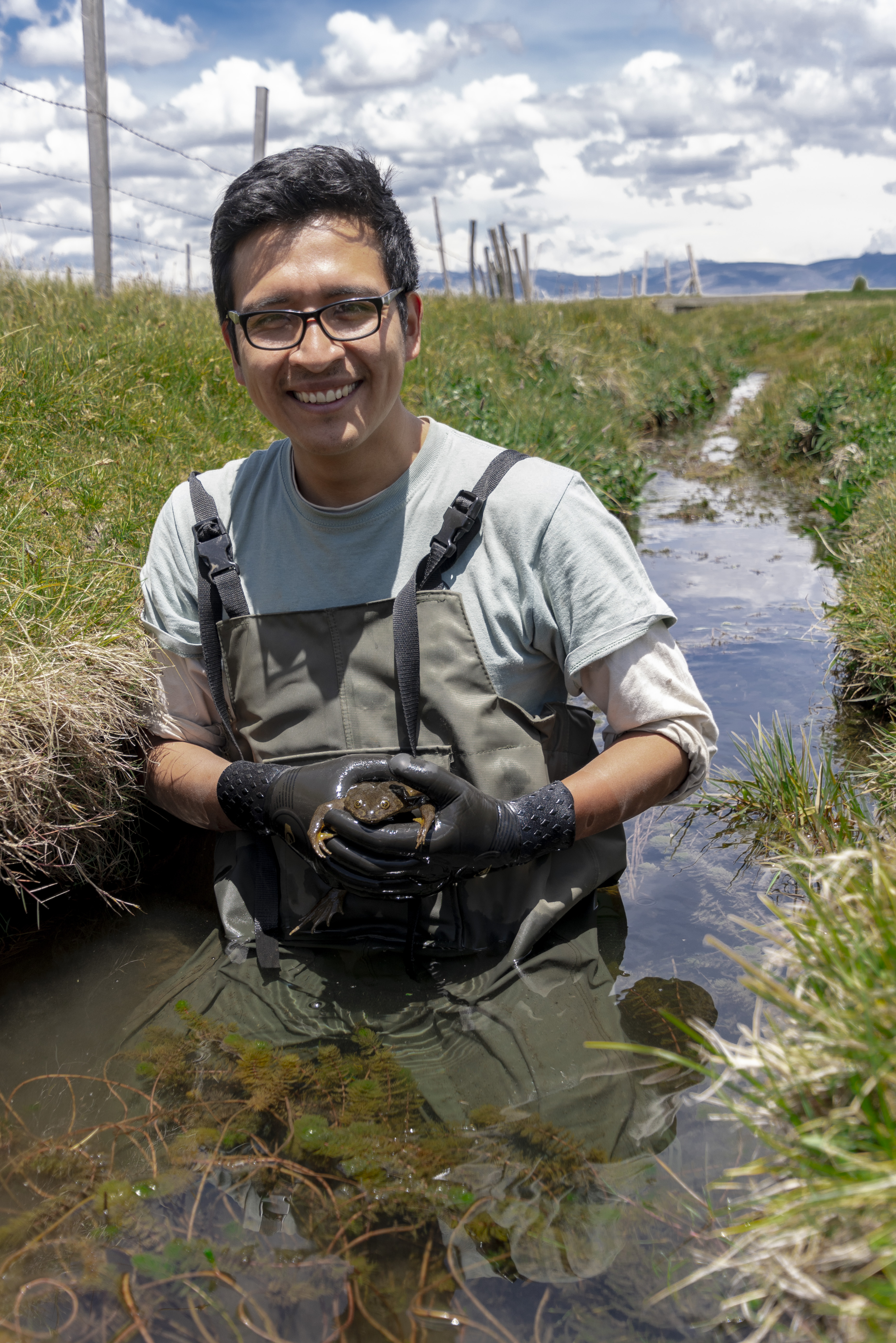The Future Leaders of Amphibian Conservation program is an award to a number of early-career conservationists from around the world that have been identified by the Amphibian Survival Alliance as the next generation of amphibian conservationists. So far we have awarded 19 Future Leaders from 12 countries (Bolivia, Brazil, Peru, Mexico, Ghana, South Africa, Uganda, India, Nepal, Pakistan, Australia and United States). You can learn more about some of the Future Leaders of Amphibian Conservation here.
Can you tell us about yourself, Luis?
What projects have you been involved in to promote amphibian conservation?
The most important step in my conservation carreer was made in 2017, together with Rogger Moreno and Oscar Damián, when we decided to create GRUPO RANA with the objective of promoting the conservation of Lake Junín Giant Frog (Telmatobius macrostomus). Since then, we have implemented an amphibian conservation program that encompasses different axes. Together with the Denver Zoological Foundation, we are executing the project “Guardians of the Frogs”, where together with rural communities we monitor and restore the frog habitat and population. Moreover, GRUPO RANA also leads the project “The Frogs and I”, whose objective is to provide local students and teachers with the tools to develop basic research to fill the gaps in biological information and help find solution to environmental problems. All of this would not be possible without the existence of protected natural areas, such as the Junín National Reserve, and the support of educational institutions and international partners such as the ASA.
What is your favourite amphibian species and why?
My favourite amphibian is the Lake Junín Giant Frog (Telmatobius macrostomus), as it gave me the opportunity to study it and therefore know it and be able to conserve it. Everything I am currently living is thanks to this frog: the opportunity to travel, to go to the countryside and work with rural communities, everything is thanks to this beautiful frog!
Has being recognized as a Future Leader of Amphibian Conservation by ASA made a difference in your career so far?
Yes, my commitment has increased a lot! My world now is to work for the conservation of frogs and the biodiversity. Currently I believe that we can do many things from non-profit organizations, but we must also involve companies in this whole process of wildlife conservation, mainly because of the great scope they have in our daily lives.
Photo by Roberto Elias.

